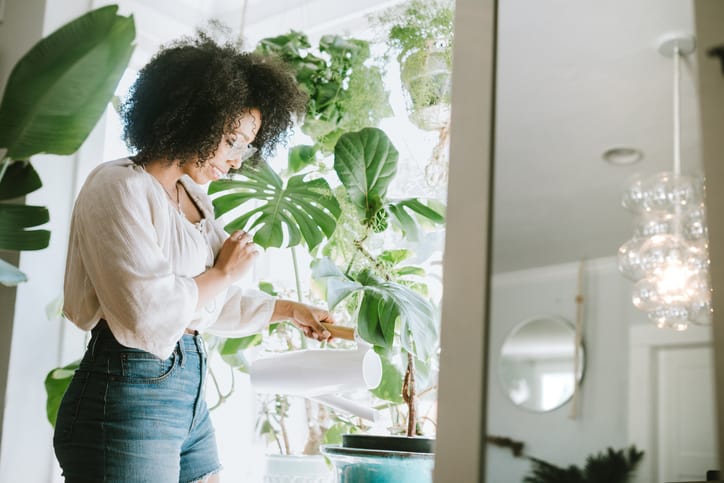 Plants can truly make a house feel like a home. If you’ve spent months or years taking care of your plants, it can be hard to think about leaving them behind or giving them away when you move. Thankfully, plants can be moved—it just takes some good planning.
Plants can truly make a house feel like a home. If you’ve spent months or years taking care of your plants, it can be hard to think about leaving them behind or giving them away when you move. Thankfully, plants can be moved—it just takes some good planning.
How you go about moving your plants largely depends on what kind of plants you’re dealing with. For most potted plants, the process is simple, but for outdoor plants or larger indoor plants, the process is a little more complex.
House plants
Small plants are the easiest to move since you can keep them in their current pots and simply place them in an open box for transport. It’s a good idea to stuff the gaps in the box with paper to prevent the plants from moving around too much when you’re on the move. It’s usually best to plan to move these in a separate vehicle with you so you can try to regulate the temperature and keep them happy during the move.
Larger houseplants may need to be trimmed or pruned first before you move them. If it’s cold out on moving day, wrap your plants in newspaper first to protect them and keep them warm. Many plants are quite sensitive to temperature changes, so you want to keep them as stable as possible.
If you’re moving a long distance with plants in your car, you’ll need to take care of them along the way. Treat them as you would your pets; bring them inside with you if you’re stopping overnight. Don’t leave them in the car: if it gets too hot or too cold, the plants could get damaged.
Outdoor plants
Outdoor plants can be a little trickier to move, so you should consider this before you start the process. It may be easier to leave certain plants behind if the process is going to be too complex.
Before you move larger plants, it’s a good idea to trim them back. This makes them easier to move and can help with regrowth when you plant them again at your new place. They should also be watered well before you begin the process, in order to make sure the roots and soil stay moist during the move. Next, you’ll want to dig up your plants, making sure to leave lots of dirt around the roots and keeping as much of the root as possible.
For smaller plants, the roots and dirt can be placed in paper bags – this is better than plastic because it allows the plants to breathe. For larger plants trees, and shrubs, the root ball should be wrapped in burlap to hold everything together. Plants can stay wrapped like this for a few weeks as long as they are kept watered and don’t get too hot, so you can do this prep work ahead of time.
Make sure to keep them in the shade during the move, as plants can be quite sensitive to temperature changes. Once you get to your new home, you’ll want to replant everything as soon as possible. Keep in mind that they may take some time to adjust to the new soil after you plant them again, so they might not immediately look as luscious as they once did. But with time and care, they’ll be happy and flourishing in their new home!


